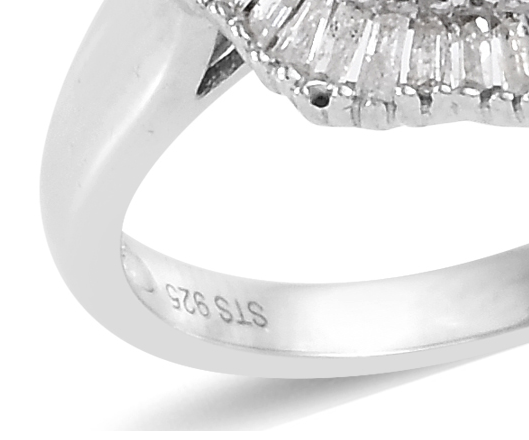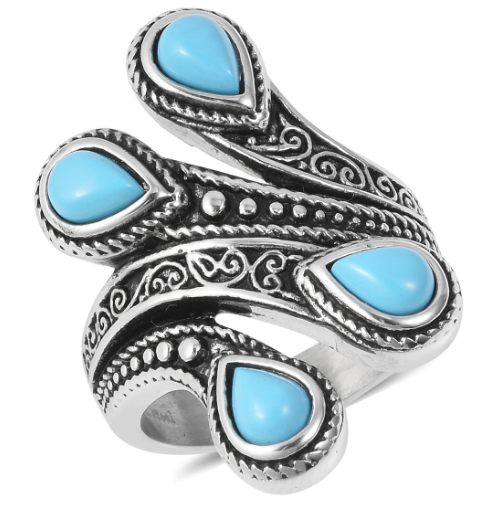Metals & Plating
Platinum is the vanilla of the metal world. Not to be confused with imitation or artificial vanilla extracts pure vanilla beans are one of the most expensive spices in the world. And like this pricy plant platinum is rare and revered.
This most precious of metals will not tarnish. It is rarer than gold and in its pure state it is a natural brilliant white. And finally its most winning characteristic is durability.
Of course a metal such as this comes with a high price tag. When looking for a jewelry piece to cherish and pass down to future generations - platinum is your choice.

- Platinum jewelry is almost 100% pure
- In the United States platinum jewelry is generally 90 to 95 percent pure with the addition of an alloy from a platinum metal group.
- All metals at one time or another will show scratches even platinum. However platinum can take some serious abuse before showing wear.
- Platinum should be cared for the same way as other metals.
Fun fact: White gold was developed by jewelers because of the public's love for platinum and its general lack of availability and high cost. To create white gold an alloy of nickel and zinc and small amounts of copper and silver are added to yellow gold.
Gold is a bit like curry. There are many different blends out there and which one you choose is largely a matter of taste.
Throughout history man has used this metal for creating articles of value including coins and jewelry. Gold is not only beautiful but also tarnish and corrosion resistant.
Gold in its natural state is a very soft material. However with a slight change of its composition we can enjoy its warmth and versatility in the creation of jewelry. Like silver gold is generally strengthened by the addition of copper.
Pure gold is a deep yellow. The lower the numeric percentage of gold in a mixture the lighter the color of the resulting alloys. The unit of measurement for gold percentage is karats (abbreviated K or KT).

Which metal alloy is added to the gold also impacts the resulting color of the finished product. The addition of copper to gold yields a rose gold color. White gold is an alloy of pure gold and a white metal like nickel manganese or palladium. Plating of rhodium which is part of the platinum family can also be used to improve the look of white gold.
Interesting Facts About Gold
- 24K is 100 percent pure gold.
- 18K gold is 75 percent gold and 25 percent other metals. dried.
- 14K gold is 58.3 percent gold and 41.7 percent other metals.
- 10K gold is 41.7 percent gold and 58.3 percent other metals.
Explore stunning gold jewelry at Shop LC.
Like pepper silver is best served up fresh. If it sits too long without cleaning it can develop a tarnish that can leave a bad taste in your mouth figuratively speaking. But regular polishing will keep this metal clean and sparkling.
Sterling silver is considered a precious metal. The majority of sterling silver contains 92.5 percent pure silver combined with other metals generally copper for strengthening.
Most high quality sterling silver will have a stamp of .925 to show the percentage of silver contained. This stamp must be accompanied by a registered trademark under federal law.

Interesting Facts About Sterling Silver
- Sterling silver may tarnish when it is exposed to air for extended periods. If you clean your silver jewelry on a regular basis the piece will serve you for years to come.
- Hand lotions harsh cleaning products and other beauty products can damage your silver. Remove your jewelry until your task is completed and the product has dried.
- Storing sterling silver in a humid location may also accelerate tarnishing.
- Shop LC uses electroplating on sterling silver to help protect the metal from tarnish and the owner from allergic reactions.
Tip: Sterling silver offers more accessible pricing compared to other metals for jewelry intended for everyday wear. Explore an exclusive selection of amazing sterling silver jewelry at Shop LC.
Like salt in your kitchen stainless steel is a workhorse in the jewelry world. This scratch-resistant metal has industrial roots and tends to be used primarily for a rugged and durable effect in jewelry pieces. It has the benefit of having a hypo-allergenic finish and a non-reactive surface.
Stainless steel is a blend of various metals but all blends of stainless steel contain chromium and nickel. Most industrial steel like 304L steel isn't suitable for jewelry purposes.

Interesting Facts About Stainless Steel
- Stainless steel may tarnish when it is exposed to air for extended periods. If you clean your silver jewelry on a regular basis the piece will serve you for years to come.
- 302L - Its relatively high nickel content makes it unsuitable for piercings but it can be worn externally.
- 316L - Sometimes referred to as surgical steel this blend is most widely used in jewelry and may be worn for piercings.
- 317L - This blend is similar to 316L but has slightly higher nickel content.
Tip: Stainless steel can be anodized to produce a variety of colors. Anodizing increases resistance to corrosion and wear. Explore a fabulous collection of stainless steel jewelry at Shop LC.
In the jewelry industry plating refers to the process of coating or bonding one metal to another base metal. The base metal is typically comprised of heartier metals like steel or brass. This base metal is then covered with a precious metal like gold or platinum to give the piece its finished look.
One form of plating ion plating is among the most advanced surface finishing processes in the trade. With traditional plating methods the gold surface coat can rub off rather easily over time revealing the base metal. Ion plating however adds a greater durability to the surface metal making the piece more wear resistant. Ion plated jewelry has been found to have up to eight times better wear and corrosion resistance over other more conventional plating methods.
Metal Plating Process
Rather than a simple dipped or "wet" process for applying the surface metal ion plated settings receive a negative charge under vacuum pressurization to essentially bond the surface and base metals on an atomic level aligning the electrons of the two substances. Unlike basic electroplating ion plating deposits layers of the surface metal atom-by-atom or molecule-by-molecule to ensure a lasting bond.
The thickness of the overlay applied to a setting varies because different pieces are subject to different expectations of wear. For example, a ring on your hand typically sees more wear and tear than a pendant around your neck does. Trade standards require that the thickness of the surface metal be substantial enough to assure durable coverage of the base metal to which it has been affixed.
Types of Metal Plating
- Goldtone: A metal with a finish that appears to be gold
- Rosetone: A mixture of 24K gold and copper that appears to be golden pink in color.
- Silvertone: A silver-plated coated metal that is not solid sterling silver.
- Vermeil Gold: It’s a premium jewelry finish that only uses genuine gold and precious sterling silver.